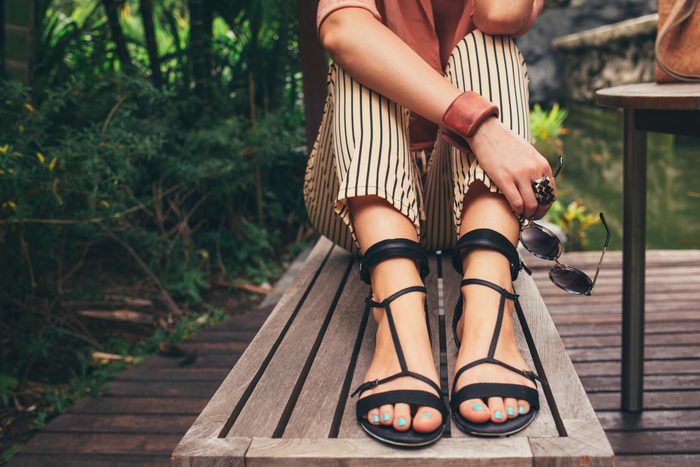
Feet health and sandals
Sandals are an essential summertime staple that lets your toes breathe. Or they’re an abomination against nature that no one should ever indulge in—or at least not men, according to some fashion sites. Whether you wear them in public or only in the safety of your own backyard, if you want to avoid killing your feet, you’ll want to keep these tips in mind from foot doctors on all things sandals.
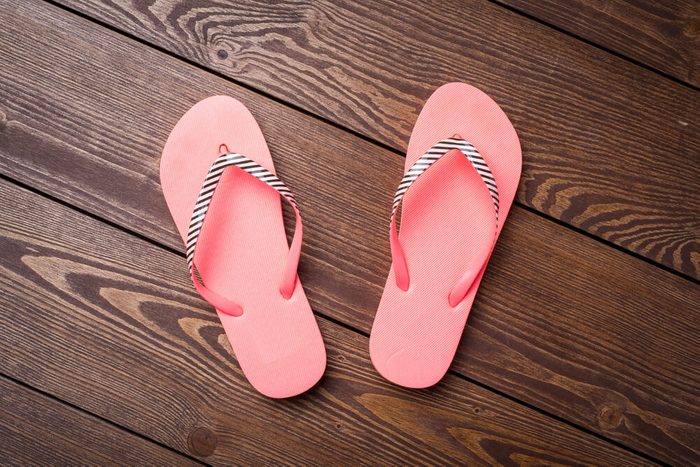
Sandals should not bend in half
With very flimsy flip-flops, you barely have more support than if you were walking barefoot. Lack of support can cause inflammation of the plantar fascia, a thick band of tissue that runs from the ball of your foot to the heel, resulting in arch pain. Over time, this may even cause foot flattening. “The arch helps you absorb stress as you walk,” says Ken Jung, MD, foot and ankle surgeon at Kerlan-Jobe Orthopaedic Clinic in Los Angeles. “If flip-flops or sandals are not providing adequate arch support, your foot will fatigue faster. You’ll feel sore as you rely on tendons that help support the arch.” Bend your flip-flops in half: If they’re flexible and fold, they aren’t providing enough support.
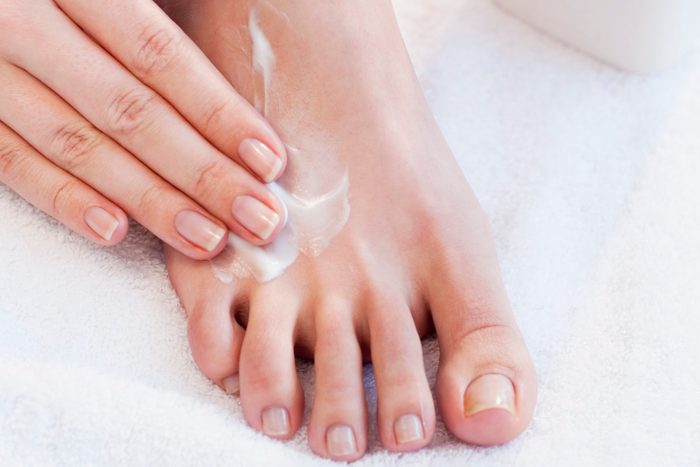
Moisturizing is especially important
Sandals expose feet to dirt and bacteria, and cracks in dry skin can harbor grime. “If somebody’s feet are very dry and they have cracked skin, especially on the bottom of the foot, they are more prone to infection because debris can get into the cracks of the skin,” says Steven K. Neufeld, MD, director of the Orthopaedic Foot & Ankle Center Division at the Centers for Advanced Orthopaedics. “Make sure the feet are well-moisturized and that there are no cracks in the skin.”
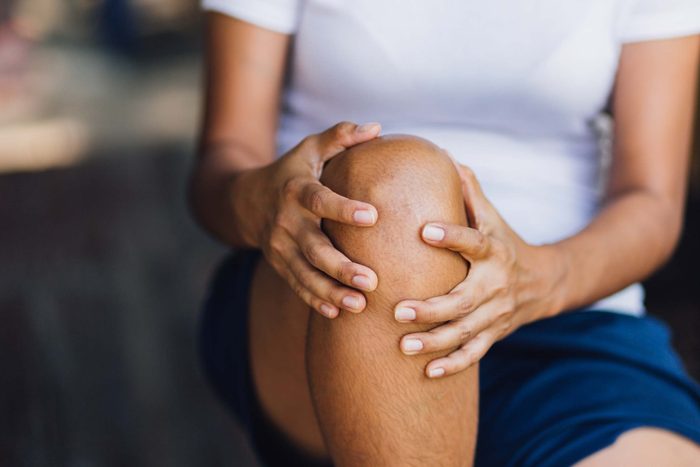
Pay attention to the rest of your body
Sandals may cause more than just foot pain. “If somebody’s foot pronates, in which the arch collapses, it could put a strain on other parts of the body,” says Dr. Neufeld. “If you wear flip-flops without support, it could cause strain and pain in the knees, hip, and lower back.”
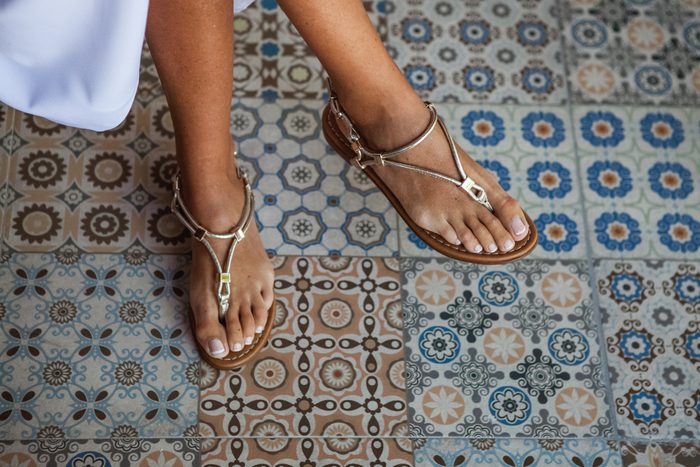
Use these tricks to break sandals in
Breaking in new shoes is undeniably uncomfortable. If you wear thong sandals, consider extra padding. “Lay a bandage between the first and second toes to give yourself a little more cushion,” says Dr. Jung. “You can also try breaking in the sandal yourself by using your fingers. Just stretch the material so it’s not as rigid.” Wear new flip-flops in short increments of time to avoid blisters and calluses. A long walk is not the time to sport your new sandals—or any without good support, for that matter. Don’t miss these 9 common feet problems and podiatrists’ simple solutions.
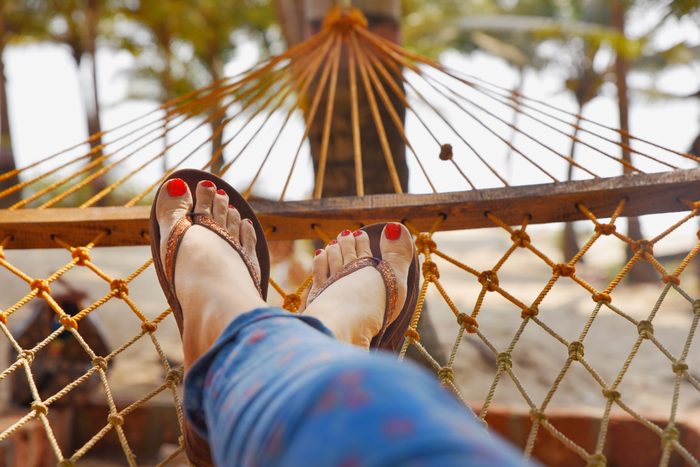
Wear them for relaxation only
Sandals are not meant for walking through the mall. “Remember, flip-flops are really reserved for poolside and beach,” says Jacqueline Sutera, DPM, a podiatrist and spokesperson for the American Podiatric Medical Association and Vionic Innovation Lab. “That is what the shoes are made for. They’re meant to protect you from sand and water.” Sandals and flip-flops also increase your chances of tripping and injury. “Sandals provide no support to keep the foot in place, so it’s very easy to trip, twist or sprain your ankle, or even break a bone,” says Dr. Neufeld. Instead, opt for one of the best podiatrist-recommended walking shoes.
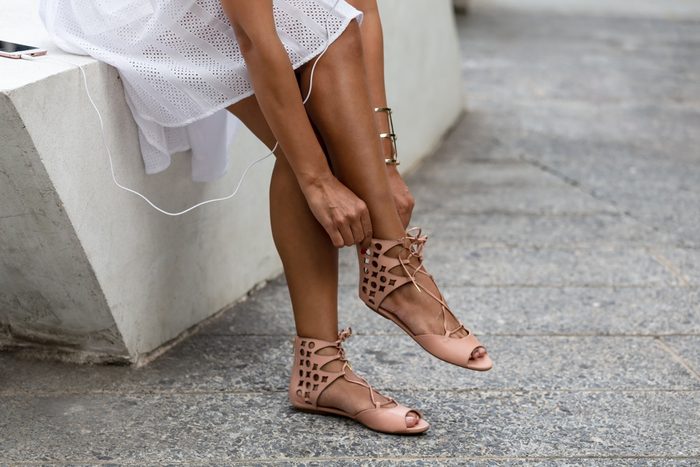
Have diabetes? Be extra cautious
People with diabetes or certain neurological diseases sometimes have difficulty feeling sensation in their feet. This means they can’t always feel when items are lodged between their feet and the sandals—a risky situation other shoes can better prevent. “I’ve seen many, many people who come into my office and have a rock lodged into their foot and they don’t even feel it,” says Dr. Neufeld. Sometimes lack of sensation can also result in blisters, cuts, and bruises from the straps of the shoes rubbing the top of the foot. “If somebody doesn’t have normal feeling in their feet, it’s important that they check their feet multiple times a day,” notes Dr. Neufeld. Check out these expert-recommended sandals for diabetic women.
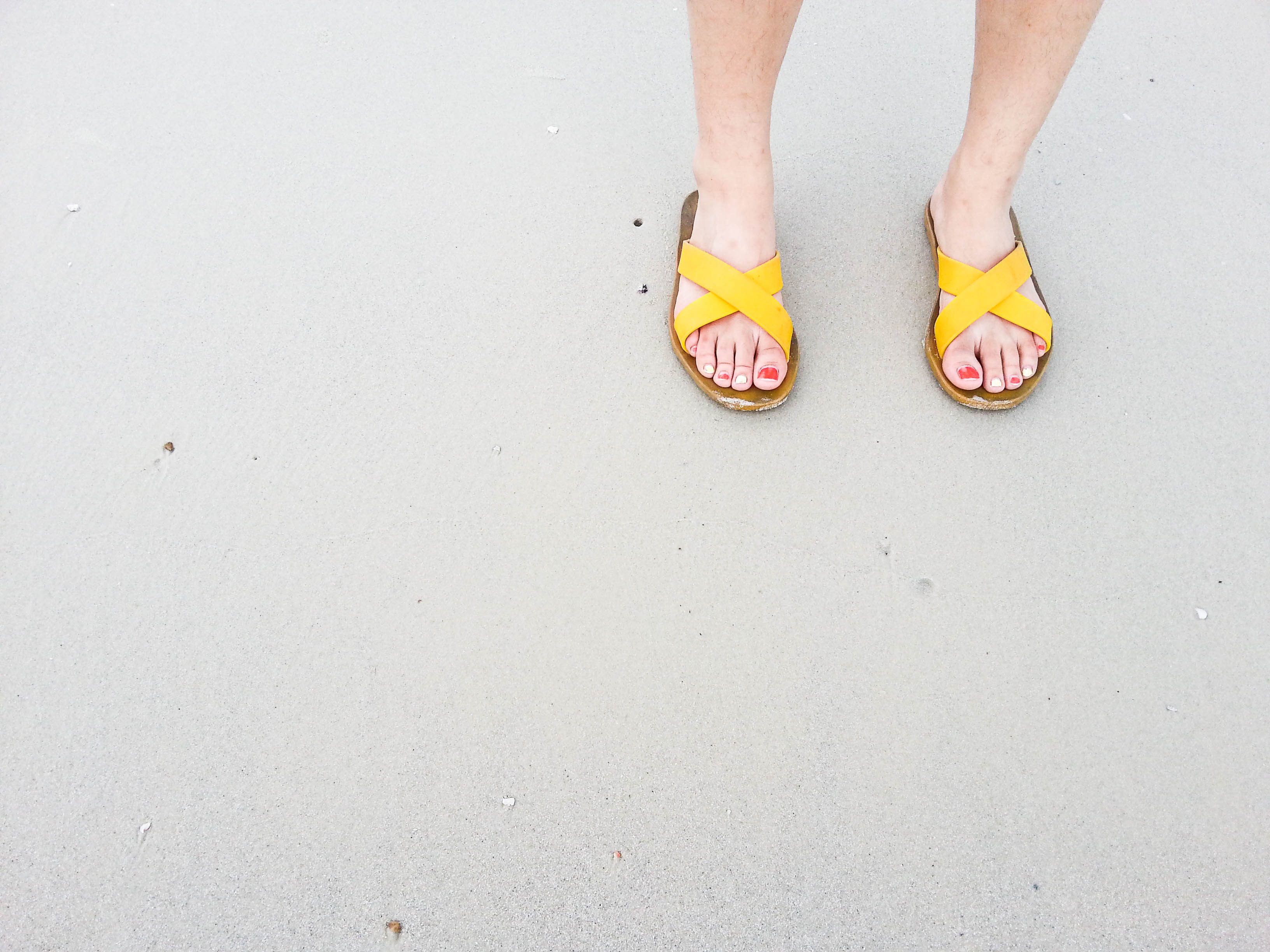
Consider the straps, too
Opt for softer, wider straps when possible. “Make sure the straps don’t go over any bony prominences and look closely at the seams,” says Dr. Jung. “Sometimes if seams are at an inopportune spot, they cause friction blisters.” (Prevent blisters with these home remedies). If you’re prone to foot pain, it may be worth it to consider regular sandals over thongs. “When you have that little thong that’s holding your flip-flop to the foot, your toes have to over-grip,” says Dr. Sutera. “When your toes over-grip, you put a lot of extra stress on the tendons and ligaments in your foot. You can develop tendonitis, heel pain, stress fractures, and ankle problems.”
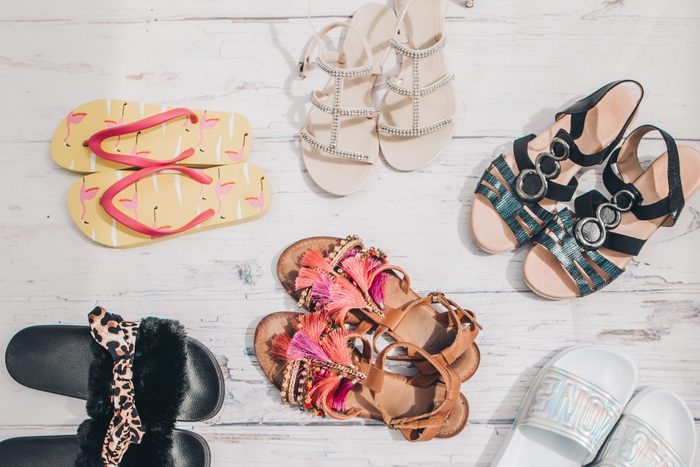
Know when it’s time to buy new sandals
Even if shoes were once supportive, they may grow flimsy after years of wear. “They might still look cute from the top, but you really have to inspect the bottom,” says Dr. Sutera. “The soles can tell you a lot about whether or not the shoe is in good shape. Worn-out soles will be tilted.” Try this at-home test to check for yourself: Place the shoes on a tabletop and look at them at eye-level. If they’re not completely flat, it’s time to get them repaired or replace them.

Always try them on before purchasing
Just because it’s easy to shoe shop online doesn’t mean you should. “Everybody has a different foot,” says Dr. Neufeld. “Some people have high arches, some people have low arches, and some people have different feet shapes. A flip-flop you just pull of the shelf at a store won’t necessarily fit you.” Go to a store where you can try on the sandals in person, and look for a shock-absorbing sole, a good arch, and a cup for the heel (which offers extra support). Next, check out the best slippers for your feet, according to podiatrists.